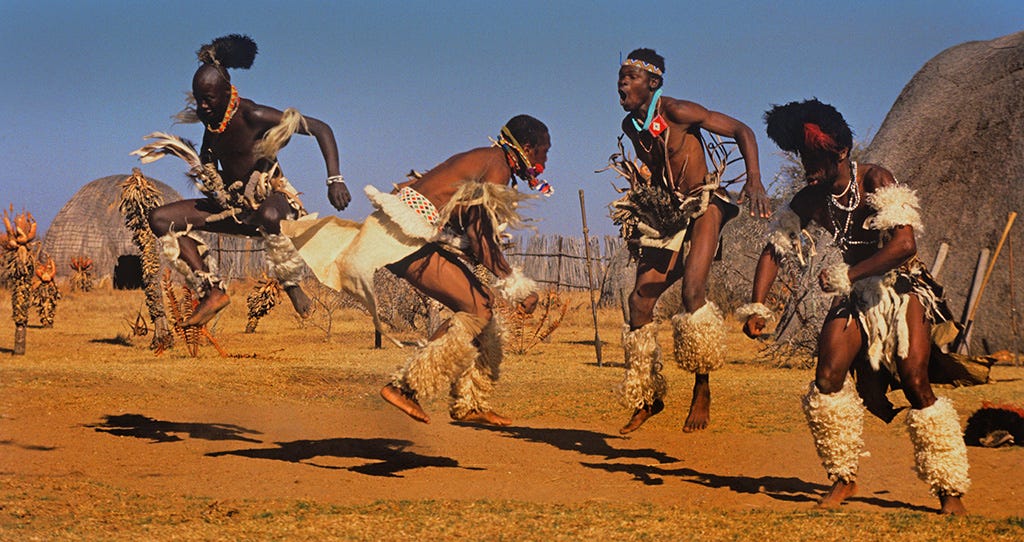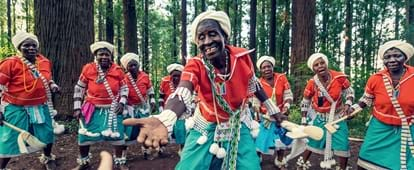Not known Facts About South African Culture Today
Not known Facts About South African Culture Today
Blog Article
The Ultimate Guide To South African Culture Today
Table of ContentsMore About South African Culture TodayMore About South African Culture TodayThe Best Strategy To Use For South African Culture TodaySome Known Details About South African Culture Today Rumored Buzz on South African Culture TodayThe Definitive Guide for South African Culture Today
An issue of importance in Zambian villages is the passing away of loved ones. All participants of the village put money, time and effort together for the burial of the deceased.Music and dancing is a very crucial facet of the Zambian society. The numerous tribal units have their own dance forms; nevertheless, makishi is common amongst all people.
How South African Culture Today can Save You Time, Stress, and Money.
When it involves songs, drums are used the most, with a selection of drumming events. In Zambia, majority of the people are Christian; Protestant and Roman Catholic. There are tiny teams of Muslims and Hindus, with the rest complying with neighborhood native tribal beliefs.

South African heritage and culture is profoundly diverse, and is composed of numerous various groups of people that each have their own practices and ideas. Having such a diversity of individuals and societies is what makes South Africa so special. In the real feeling of the phrase, we are a rainbow nation.
South Africa has about three hundred thousand Portuguese individuals staying in it. Making it the 7th on the list of countries with one of the most Portuguese individuals in it beyond Portugal. Portuguese is not just a culture, but it is additionally a language and a race. Portuguese individuals stem from the country of Portugal in Europe, nevertheless, because of Portugal (like numerous various other countries in Europe) checking out the globe and overcoming various other countries during the 15th 20th centuries, South Africa has what we call Portuguese South African's living in it.
Little Known Questions About South African Culture Today.
Amongst the famous functions of the topography is a plateau that covers nearly two thirds of the center of the country. The plateau complicated rises toward the southeast, where it climaxes in the Drakensberg array, component of an escarpment that divides the plateau from the coastal areas. The Drakensburg consists of Champagne Castle, the highest possible peak in the nation.
The region north of the Witwatersrand, called the bushveld, inclines downward from east to west towards the Limpopo River, which creates the international boundary. The western area of the plateau, the middleveld, likewise descends in the direction of the west and varies in altitude in between the highveld and bushveld. Between the Drakensburg and the eastern and southerly coast, the land descends to the sea.
Nearer the coastline there is a low-lying level called the eastern lowveld. Southwest of the plateau the nation becomes progressively a lot more arid, paving the way to the stony desert of the Great Karroo, surrounded on the eastern by the lower, better watered plateau of the Little Karroo. Dividing the completely dry southern interior from the sandy littoral of the southerly shore and West Cape is another range, the Langeberg.
A Biased View of South African Culture Today
The nation's racially, ethnically, and politically divided background has produced national and subnational symbols that still operate as symbols of the country, and others icons that are approved just by particular teams. The monoliths to white inhabitant conquest and political dominance, such as the Afrikaner Voortrekker ("pioneer") Monument in Pretoria and the Rhodes Monolith recognizing the British colonial empire building contractor and Cape head of state Cecil Rhodes, remain sectarian symbols.
The initial contemporary occupants were the San ("bushman") hunter-gatherers and the Khoi ("Hottentot") individuals, who rounded up livestock (South African culture today). The San might have existed for thousands of years and left evidence of more their presence in thousands of old cave paints ("rock art"). Bantu-speaking clans that were the ancestors of the Nguni (today's amaZulu, amaXhosa, amaSwazi, and vaTsonga peoples) and Tswana-Sotho language groups (today's Batswana and Southern and Northern Basotho) moved below eastern Africa as early as the fifteenth century

The two former republics of the Orange Free State and Transvaal (South African Republic) were developed by Afrikaner settlers that beat and dispossessed the Basotho and Batswana. Lesotho would certainly have been forcibly included right into the Orange Free State without the expansion of British protection in 1869. The best marriage of the country resulted from the South African War (18991902) between the British and both Afrikaner republics, which minimized the nation to mess up at the beginning of the twentieth century.
Afrikaners traditionally considered themselves the just real South Africans and, while giving complete citizenship to all residents of European descent, denied that condition to individuals of shade up until the autonomous change of 1994. British South Africans retain a sense of social and social connection to Great Britain without compromising their identification as South Africans.
Some Known Incorrect Statements About South African Culture Today
The diversity and fragmentation within ethnic groups and the balance of tensions in between those teams throughout the twentieth century protected against interethnic civil problem. While intergroup stress over resources, entitlements, and political prominence continue to be, those problems are as most likely to match Zulu versus Zulu as Zulu against Xhosa or African against Afrikaner.
From colonial India, British merchants and managers brought the rounded metal ornamental roofing systems and slender lace job columns that still exemplify the verandas of homes in communities and cities throughout the nation. Homes of praise contribute an important building aspect also in the smallest communities. Along with the soaring steeples and timeless stonework of Afrikaans Dutch Reformed churches, Anglican churches, synagogues, mosques, and Hindu temples supply variety to the religious architectural scene.

Slaughtering and the brewing of typical cereal beer are necessary in protecting the engagement and a good reputation of from this source the forefathers who are taken into consideration the guardians of good luck, prosperity, and wellness. Indian areas preserve their indigenous culinary customs and use them on Islamic and Hindu ritual and ceremonial events. Afrikaners and Coloured individuals gather at weekend breaks and special celebrations at multifamily barbeques called braais, where area bonds are strengthened.
Since this was the primary economic venture of both black Africans and white homesteaders, dispute in between those teams fixated the possession of grazing land and livestock. In 1867, the biggest diamond deposits on the planet were uncovered at Kimberley in the west main location. The wealth from those fields helped fund the exploitation of the biggest gold reef in the world, which was found on the Witwatersrand in 1886.
The Best Guide To South African Culture Today
This brought about misconceptions and calculated misrepresentation in the ventures of white inhabitants and government officials with African principals throughout the colonial period (South African culture today). In the go to website facility of African gets, some elements of common and chiefly "tribal count on" land tenure were maintained, and also in white rural locations, kinds of common tenure were still exercised in areas with African neighborhoods
After the democratic transformation of 1994, programs for land restitution, redistribution, and reform were instituted, but progression has been sluggish. The white minority still manages eighty percent of the land. In the wake of agricultural land intrusions in Zimbabwe, the Division of Land Matters has pledged to speed up land redistribution.
Report this page